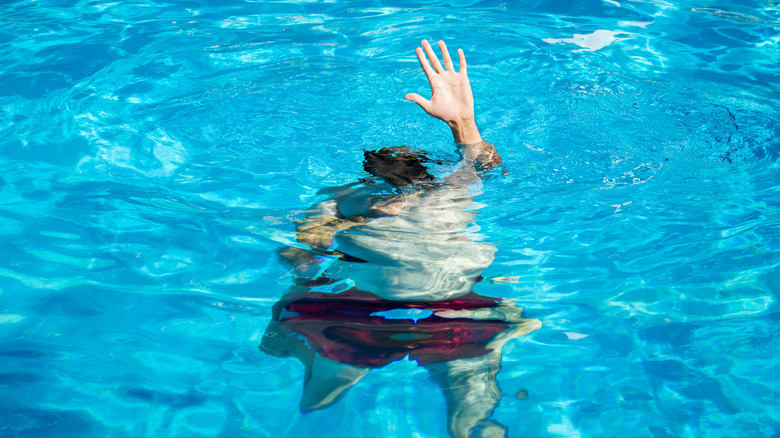The Real Reason Not Everyone Can Float In Water
Swimming is a fantastic past-time. As the Department of Health for the State Government of Victoria points out, swimming is a great way to make friends while keeping your body moving. Because it is a low-impact activity, it is also something most people can engage in throughout their lifetime.
Even better, there is no one right way to swim. Some people prefer competitive swimming, while others like to get in the water and just move their bodies in whatever way feels good. As it turns out, simply floating in the water has its own set of health benefits. Psychology Today notes that there are stress-relieving properties of flotation therapy, as well as benefits for those with chronic pain, as well as conditions like arthritis and fibromyalgia.
The high salt content of flotation therapy pods makes it easy for just about anyone to float. Unfortunately, it's not so easy for some people to float in the average body of water. The real question is, why is it so hard for some people to float when others seem at home on the surface of the water?
Leg muscles and the loss of alignment
Floating may seem as easy as laying back in the water and closing your eyes. As Swim Network outlines, however, it's actually a multistep process that many people have to practice before they master. This is because floating is one of those activities that looks simple to onlookers.
When a person floats, they are keeping their head and trunk in line while arching their back slightly and bending their knees to counterbalance the weight of their leg muscles. Their arms act as counterbalances that are placed either off to the side or above their head. Although they may look half-asleep, they are constantly making small adjustments to keep themselves aligned and afloat.
Each of these steps is necessary if someone wants to float. If they don't, they're likely to start sinking. As BBC Sport points out, a person failing to float will only sink a little below the water's surface. It usually starts in the legs, as leg muscles are dense.
If this sounds familiar, follow the suggestions from Swim Network. Slightly bend the knees to offset the weight of your leg muscles, and don't forget to focus on arm placement as well. With those tips in mind, don't restrict the small motions your body needs to stay afloat.


